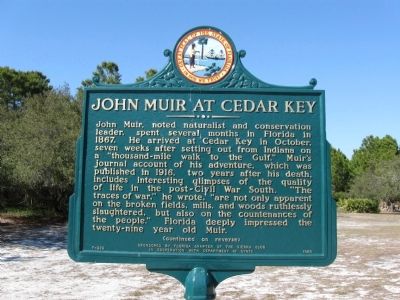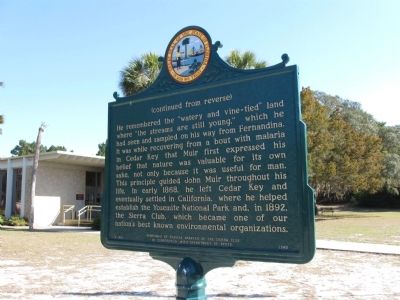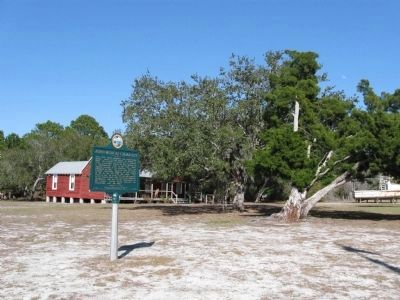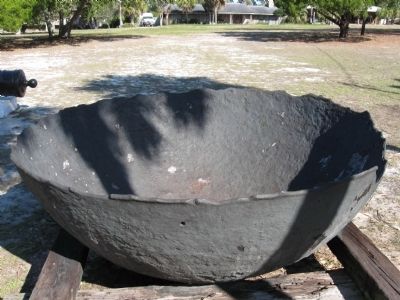Cedar Key in Levy County, Florida — The American South (South Atlantic)
John Muir at Cedar Key
He remembered the "watery and vine-tied" land where "the streams are still young," which he had seen and sampled on his way from Fernandina. It was while recovering from a bout with malaria in Cedar Key that Muir first expressed his belief that nature was valuable for its own sake, not only because it was useful for man. This principle guided John Muir throughout his life. In early 1868, he left Cedar Key and eventually settled in California, where he helped establish the Yosemite National Park and, in 1892, the Sierra Club, which became one of our nation's best known environmental organizations.
Erected 1983 by Florida Chapter of the Sierra Club and Department of State. (Marker Number F-303.)
Topics. This historical marker is listed in these topic lists: Environment • Parks & Recreational Areas. A significant historical year for this entry is 1867.
Location. 29° 9.048′ N, 83° 2.898′ W. Marker is in Cedar Key, Florida, in Levy County. Marker can be reached from SW 166th Court, in the median. Touch for map. Marker is at or near this postal address: 12231 SW 166th Court, Cedar Key FL 32625, United States of America. Touch for directions.
Other nearby markers. At least 6 other markers are within 14 miles of this marker, measured as the crow flies. The Cedar Keys: Pencils, Lumber, Palm Fiber and Brushes (approx. 1.3 miles away); Cedar Key Veterans Monument (approx. 1.4 miles away); Island Hotel (approx. 1.4 miles away); Atlantic to Gulf Railroad (approx. 1.4 miles away); Rosewood, Florida (approx. 9.3 miles away); Fort Duval and the Suwannee River (approx. 13.7 miles away).
More about this marker. The historical marker is located just outside the Cedar Key Museum building. The restored 1920's house of St. Clair Whitman, founder of the museum, is on premises.
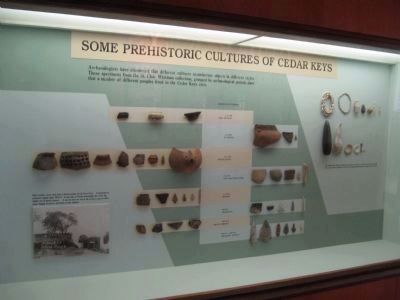
Photographed By Julie Szabo, March 6, 2009
4. Some Prehistoric Cultures of Cedar Keys
This Cedar Key Museum display includes potsherds and tools, all from the collection of St. Clair Whitman, founder of the museum. The oldest artifacts were created between 6,000 and 2,000 BC, the most recent ones, as early as 1750 AD.
Credits. This page was last revised on November 10, 2019. It was originally submitted on April 6, 2009, by Julie Szabo of Oldsmar, Florida. This page has been viewed 2,785 times since then and 58 times this year. Photos: 1, 2, 3, 4, 5. submitted on April 6, 2009, by Julie Szabo of Oldsmar, Florida. • Christopher Busta-Peck was the editor who published this page.
